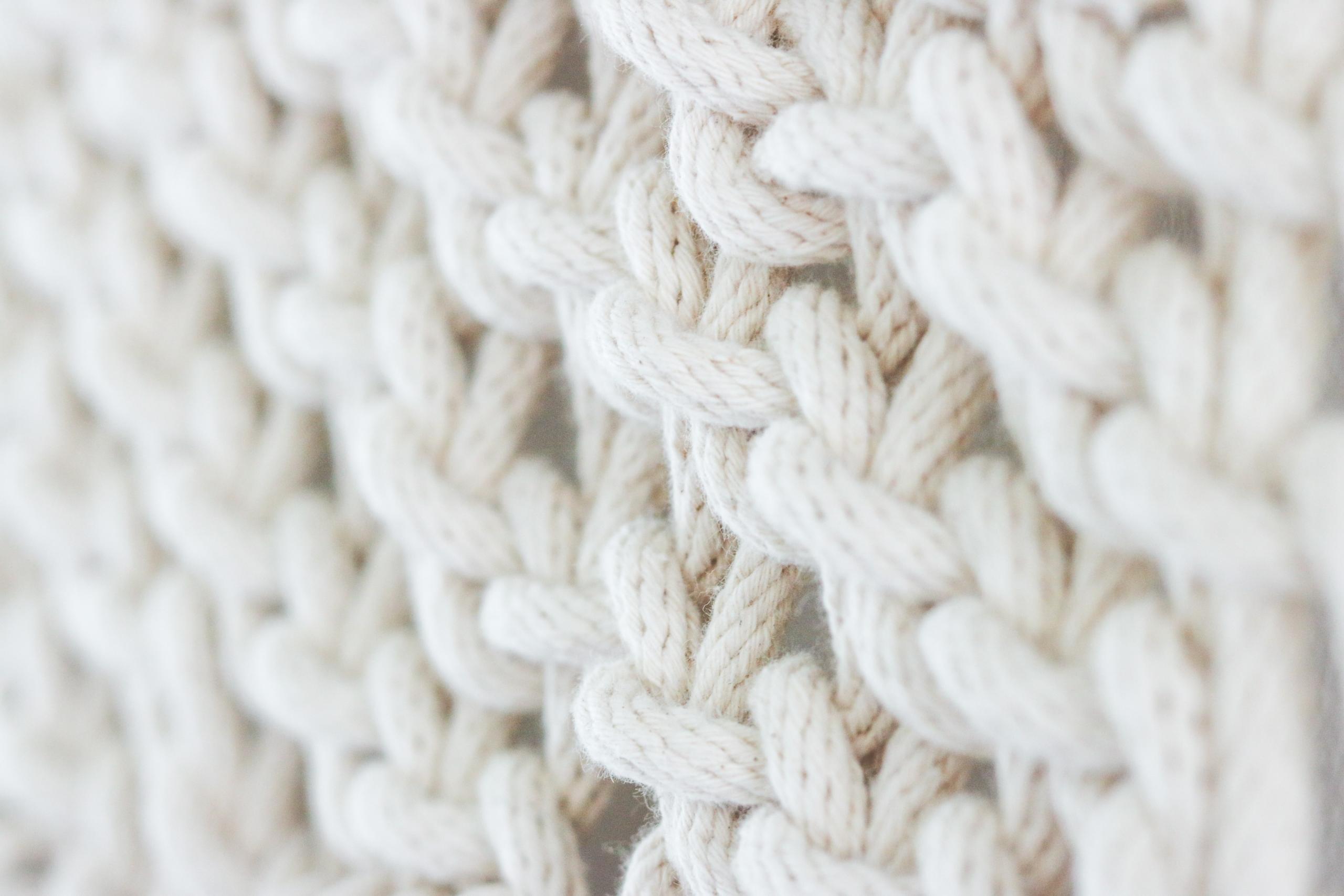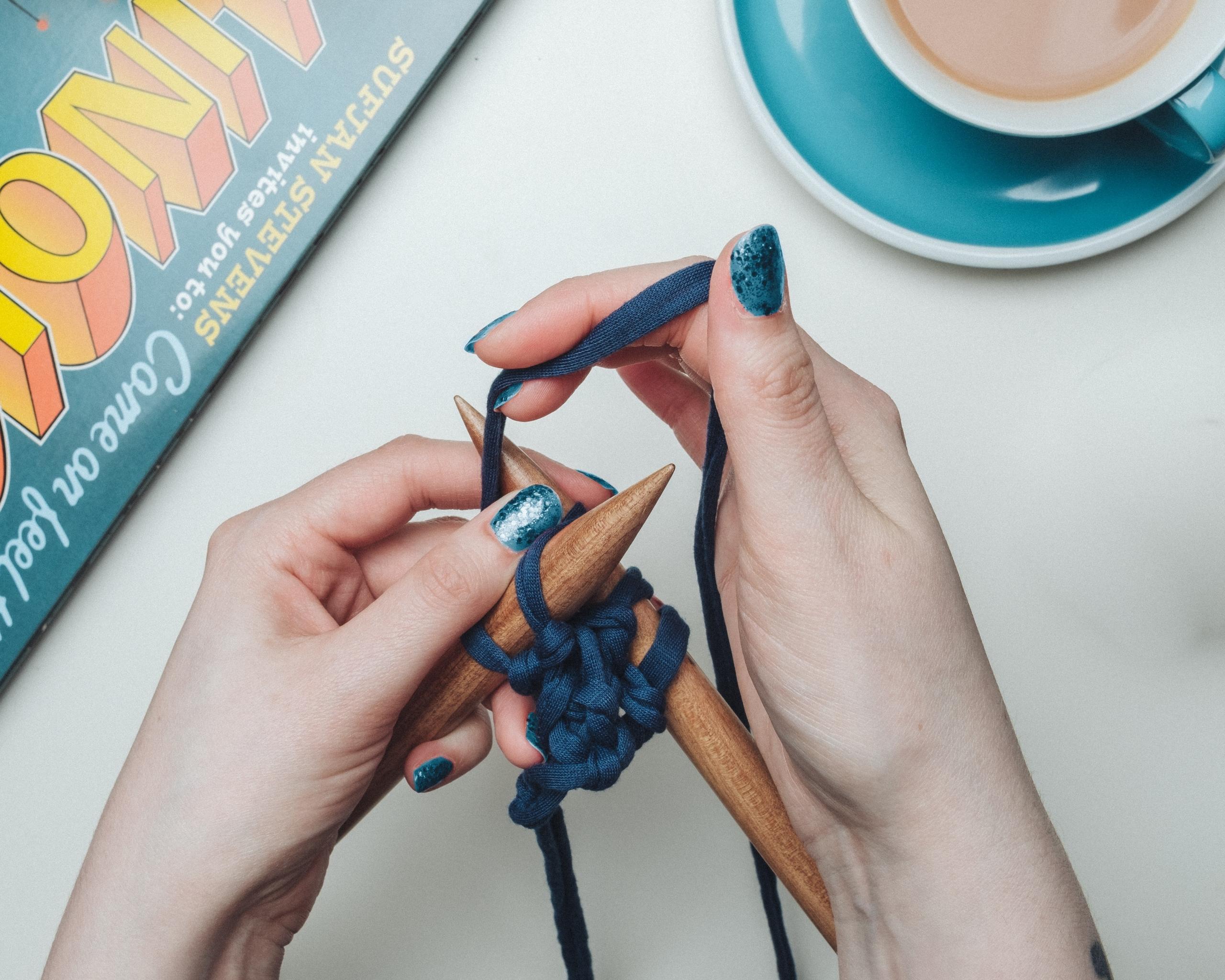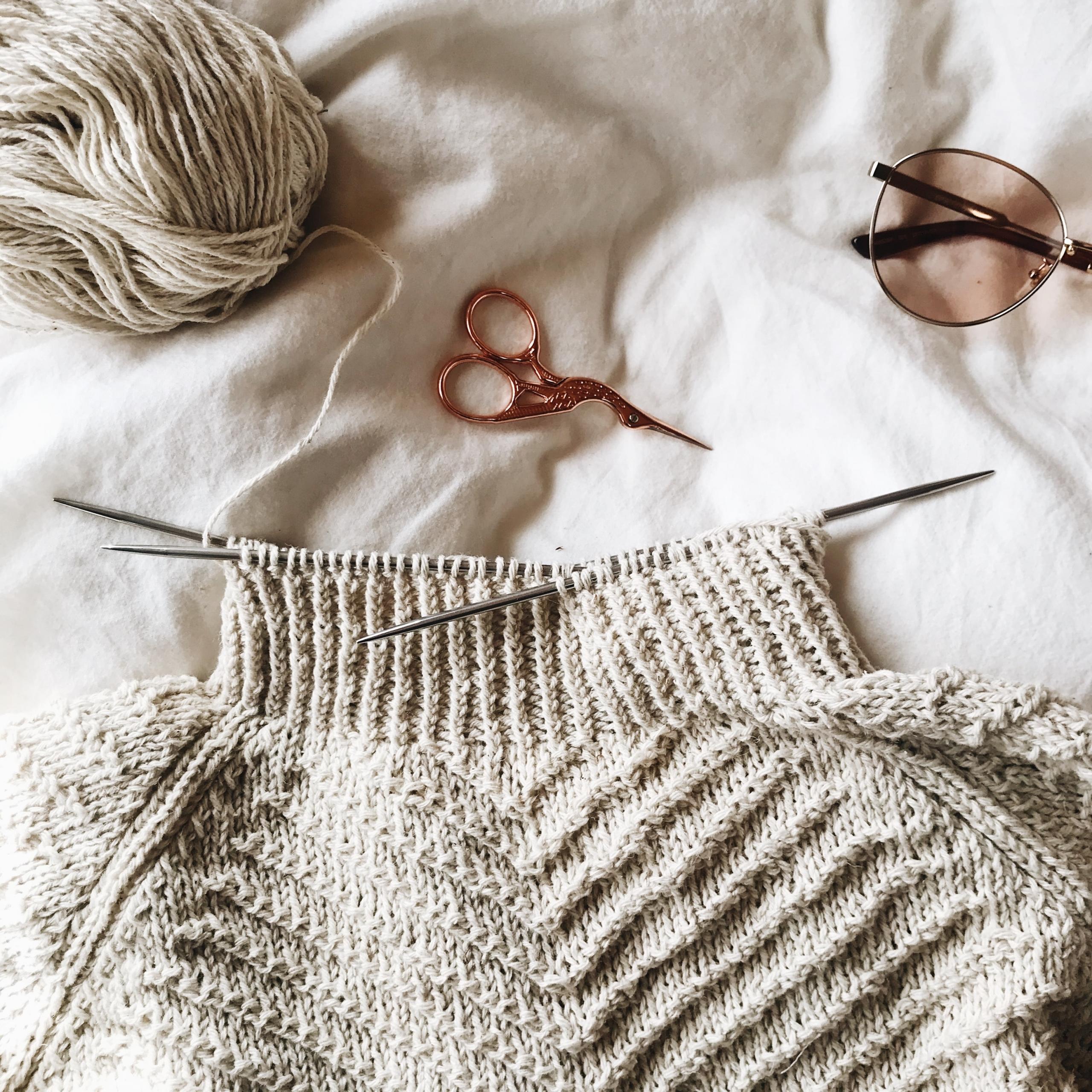From socks to scarves, from fancy sweaters to twisted cardigans, many people want to create their own clothes and accessories. And for that, there is only one solution: learn to knit! Purl stitch, needles, rows, many are the technical terms and techniques that populate the world of knitting.
From left loop to garter stitch, there are many a technique and term that you'll have to learn if you're a beginner knitter.
That's why, with the growing interest in crochet and free online lessons, it can be interesting to know how to get started with easy knitting!

Gather all the Materials to Start Knitting
Wanting to make a shawl or a bonnet is a very nice project. But taking up knitting is also and above all: getting the necessary materials. Because knitting is not done alone, and it is necessary to be well-equipped to be able to claim to make woolen mittens.
Like any other discipline, knitting requires a sort of basic starter pack, which includes
- Needles,
- Thread of one color or more (depending on the material: wool, mohair, linen, etc.)
- A wool needle, to help get the threads in,
- A tape measure, to measure patterns and creations,
- Sewing scissors, if needed,
- Etc.
Keep in mind that, despite the beauty of this activity, you may not enjoy it as much as you thought! But even knitters that love what they do miss a loop or mess up their stitches, or even forget their right from their left sometimes!
Choosing the Right Needles to Start Knitting
Of course, knitting is above all: a pair of needles. It's hard to imagine sweaters, hats or a scarf knitted without needles! They are the best thing to choose when you start knitting. Because with a good needle, a small part of a knitters work that is done and only the fun part if left!
When you start your first projects, we recommend not to use straight needles. They are not as practical as they used to be, and may even cause pain to the fingers.
Circular needles are preferred on the new models. The reason? They are designed without seams, and circular needles are the ideal tools for that! They save time, which is always good to when you have to make a series of scarves.
Concerning the material of the needle, bamboo is nowadays valued over metal or plastic, for the simple reason that it is quite easy to handle, and allows you to feel comfortable from the first steps.
Watching a video or video tutorial on how to use a pair of these can go a long way!

How to Start Knitting: What Size Needle ?
Before looking at knitting patterns and techniques on video online, it is necessary to look at the needles. Because yes, a bad size of needle does not forgive when you are a beginner. It is often useful to choose a needle neither too fine, nor too thick.
When they are too thin, the needles may slip out of the hands more. On the other hand, if they are too big, they will not be very flexible!
We will then tend to advise an average size of 4 or even 5, in order to optimize the beginnings of the practice.
How to Start Knitting : Which Yarn to Choose ?
Wool is one of the most used yarns in knitting, especially when starting out. However, there is a very large number of yarns, which gives knitting all its richness. These yarns allow you to make a curtain with pompoms as well as an embroidery on a shirt, with the same ball of yarn, as well as a good soft blanket.
Among the yarns, we find alpaca, mohair, cotton, cashmere, or linen. But when you are a beginner, some of them are not the most suitable. Cashmere, for example, is a fiber that is too fragile and difficult to work with for beginners.
Alpaca is a pretty simple solution to replicate both warm pieces without spending too much money. Because yes, cashmere is expensive, too!
Among the wools, it is perhaps the merino wool which wins all the awards, since its yarn is rather soft, in spite of a certain fragility.
When we are not interested in higher quality fabric, or when we just want to knit, acrylic will seem perfect, because it is resistant, not too expensive, and easy to find. Come on, now that you have your balls of wool, let's go to the knitting pattern!

Choose an Accessible Knitting Project to Start With
When the time comes to learn knitting, all you have to do is go to a haberdashery to find what you need. However, when you start an activity, whatever it is, it is the project that will also define the way you perceive your know-how. It is therefore essential to select a piece that is in line with your abilities.
Instantly, we often think of making a shawl or scarf, in reality, this project is not so suitable for beginners. Or rather: it is, up to a point.
Therefore, it is sometimes a bad first experience of knitting! A raglan sweater, a small cardigan (easier than you think) can be quite accessible garments that will make the person who designed them proud.
Because let's not forget that one of the interests of knitting is also to contemplate the result of its work!
Find sewing classes near me here on Superprof.

The Sample when Starting to Knit
What is a sample? In reality, the sample is well named: it is a kind of test before starting to knit the real piece. Indeed, between the size of the needle and the quality of the wool, there can be real disappointments when it comes to attacking your pattern.
Knitting a swatch then ensures that the needles are the right size. Beginners might find this redundant or unnecessary, but in reality, with experience, you understand that taking 30 minutes to produce a sample is essential.
Because if the sample is not good, it could mean that the knitting is too tight or too loose, and that the size of the needles is not the right one. Which is essential!
Find sewing classes near me here on Superprof.
Think about Knitting Kits for Beginners
From the garter stitch to the choice of knitting needles, some tutorials are easier than others, but you don't always have the right material when you start knitting. That's why knitting kits are a very interesting alternative for beginners.
These are presented as boxes that include both patterns, but also and above all: the right material to make them. A custom-made knitting material, which would almost make us think that, yes, knitting is easy!
If each needle corresponds to each pattern, what more can you ask for? Not much!
Follow the Patterns when Starting to Knit
In knitting, the pattern is THE basis according to which your project will build on. From knowing which row to start your loop to learning how to read patterns - it can be a bit hard to get the technique down as a beginner.
Patterns can either be found free online or for a fee and are usually downloadable on any device. Here are some things that are usually included in any pattern regardless of whether it's free or not:
- A legend with acronyms for certain stitches (garter, purl, etc.) that will help you read the pattern and understand the technique
- How many stitches per row and how many rows
- Color of yarn that you can use
- Size of the thread and needle
- Type of yarn
How to Start Knitting: Washing
After making your first knitwear, you are tempted to wear or use it right away, and therefore put it in the washing machine. However, there are certain rules to follow to avoid damaging them.
Most of the time, if they are made of wool, the clothes do not support well the extremes of the washing machine, and a hand wash is often welcome. On the other hand, it is possible to put your jacquard sweater in the washer by programming a soft cycle. With time, it will get used to it.
The fact remains that a knitted item is a satisfying result, certainly, but often fragile.
Basic Vocabulary to Start Knitting
Indeed, what could be better than to have the tools to talk about what you are going to do? Here are some basic terms to better understand a pattern:
- Fold over: finish the knitting by folding over each stitch,
- Stitch: the knots made with the needles,
- Stitch: a set of stitches and rows, which can be used to make patterns such as purl stitch,
- Rib: one edge of the knitted fabric,
- Knitting in the round: knitting without a seam, using circular needles,
- Jacquard: a knit with several colours,
- Decrease/increase: remove or add stitches to the knitting,
- And many more!
With all these tips, you are ready to face your first model, good luck!















